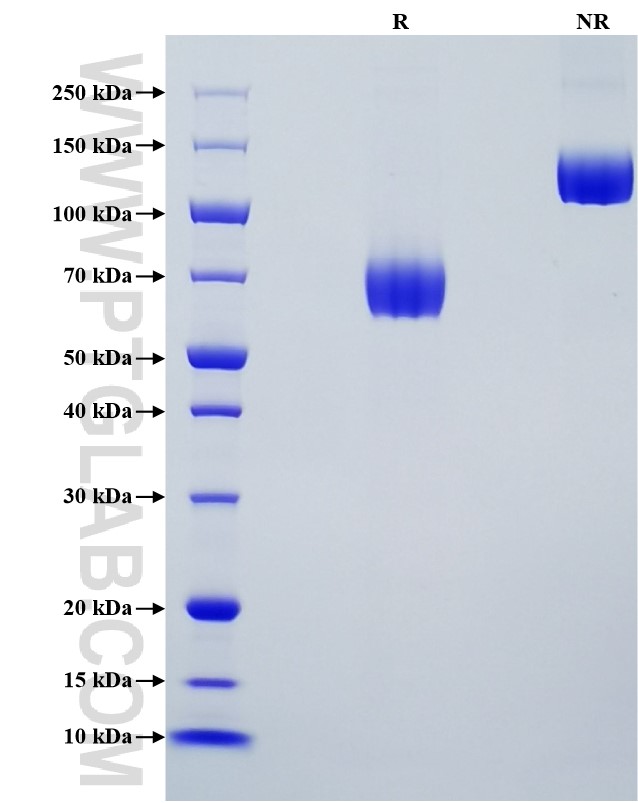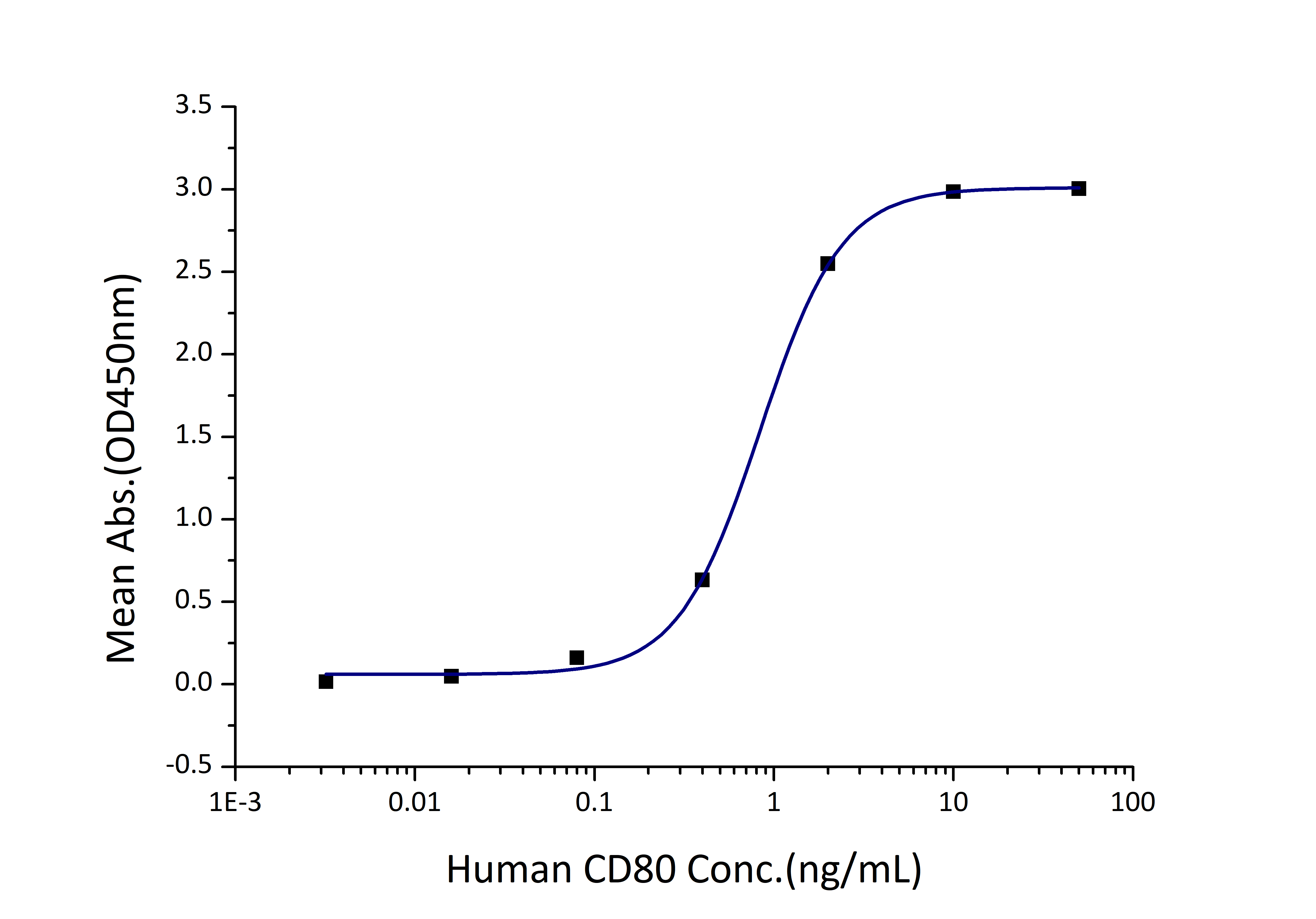Recombinant Human CD80 protein (hFc Tag)
种属
Human
纯度
>95 %, SDS-PAGE
标签
hFc Tag
生物活性
EC50: 1-4 ng/mL
验证数据展示
产品信息
| 纯度 | >95 %, SDS-PAGE |
| 内毒素 | <0.1 EU/μg protein, LAL method |
| 生物活性 |
Immobilized Human CTLA-4 (Myc tag, His tag) at 2 μg/mL (100 μL/well) can bind Human CD80 (hFc tag) with a linear range of 1-4 ng/mL. |
| 来源 | HEK293-derived Human CD80 protein Val35-Asn242 (Accession# P33681-1) with a human IGg1 Fc tag at the C-terminus. |
| 基因ID | 941 |
| 蛋白编号 | P33681-1 |
| 预测分子量 | 49.9 kDa |
| SDS-PAGE | 66-80 kDa, reducing (R) conditions |
| 组分 | Lyophilized from 0.22 μm filtered solution in PBS, pH 7.4. Normally 5% trehalose and 5% mannitol are added as protectants before lyophilization. |
| 复溶 | Briefly centrifuge the tube before opening. Reconstitute at 0.1-0.5 mg/mL in sterile water. |
| 储存条件 |
It is recommended that the protein be aliquoted for optimal storage. Avoid repeated freeze-thaw cycles.
|
| 运输条件 | The product is shipped at ambient temperature. Upon receipt, store it immediately at the recommended temperature. |
背景信息
CD80 (also known as B7-1) is a type I membrane protein that is a member of the immunoglobulin superfamily, with an extracellular immunoglobulin constant-like domain and a variable-like domain required for receptor binding. It is expressed on antigen-presenting cells (APCs), including B cells, dendritic cells, monocytes, and macrophages. CD80 is the receptor for the proteins CD28 and CTLA-4 found on the surface of T-cells. It is involved in the costimulatory signal essential for T-lymphocyte activation. T-cell proliferation and cytokine production is induced by the binding of CD28, binding to CTLA-4 has opposite effects and inhibits T-cell activation. CD80 also acts as a cellular attachment receptor for adenovirus subgroup B.
参考文献:
1. Peach RJ. et al. (1995). J Biol Chem. 36: 21181-21187. 2. Vasilevko V. et al. (2002). DNA Cell Biol. 3: 137-149. 3. Short JJ. et al. (2006). Virus Res. 122:144-153.

